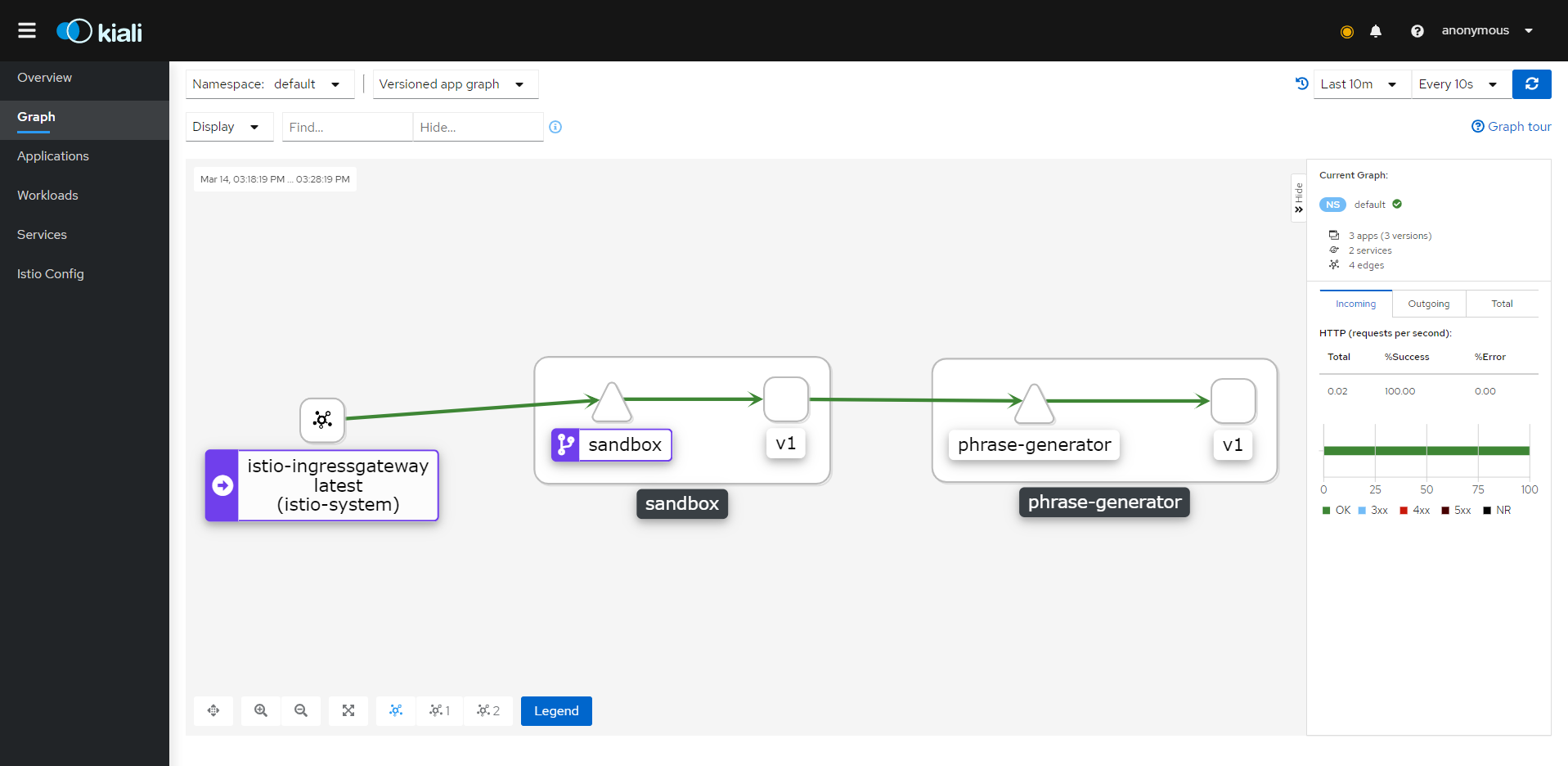English | 简体中文
Using Tencent Cloud Kubernetes with Istio Service Mesh.
The Go language is required for building and running the project modules, the Terraform is for providing the cloud structure we need.
- Docker
- Docker-Compose (with support to version 3 yml files)
- Go 1.16
- Terraform 0.14+
- Istioctl
First thing you need to do is to get you local environment ready with the dependencies I described above. Then You need to have a Tencent Cloud account ready and create an API Key. Having that in hands just follow the next topics.
Just export these or set them in you bash_profile, Windows environment or whatever.
export TENCENTCLOUD_REGION=na-ashburn
export TENCENTCLOUD_SECRET_ID=your_secret_id
export TENCENTCLOUD_SECRET_KEY=your_secret_keyDepending on the way you set those, make sure to restart your terminal so changes can take effect.
📢 Hey! na-ashburn is basically Virginia region for Tencent Cloud
First check the Terraform files in infrastructure/tencentcloud for providing the TKE cluster for this project.
You can customize the cluster if you want, but rest assured because we will be providing very small machines,
so these are not going to devour your wallet.
Let's start initializing terraform for this project:
cd infrastructure/tencentcloud
terraform initBasically Terraform will download the provider templates files and get ready to plan and apply the cloud structure.
We can check our plan by executing:
terraform planIf you are following this guide and executing the commands you can check that terraform inform you that it is going to create 3 resources. So what are those 3 resources?
- VPC (10.0.0.0/16)
- VPC Subnet (10.0.0.0/24)
- TKE Cluster
📢 Hey! The cluster will be open to the world
0.0.0.0/0you can change that configuration if you are concerned by changing themanaged_cluster_internet_security_policiesvariable ininfrastructure/tencencloud/variables.tf.
All right, now let's apply this plan by executing:
terraform applyTerraform will show you the plan again and ask you to confirm by inputting yes, so just confirm that and let
Terraform provide the cloud structure for us. When Terraform returns the terminal for you, you are set!
📢 Hey! Tencent Cloud takes up to 3 minutes to create a TKE cluster. It's time to take that cup of coffee ☕
The TKE Cluster is now running, so access https://console.cloud.tencent.com/tke2/cluster and learn how to configure your kubectl context in the Basic Information page, so you can start working with the cluster we created.
You can check your configuration by executing:
kubectl get allIf it returns a service/kubernetes and some other information, you are set.
We are using Istio service mesh for this project, so by using istioctl we can install and configure Istio very easily.
istioctl install --set profile=demo -yAdd a namespace label to instruct Istio to automatically inject Envoy sidecar proxies when we deploy our application late.
kubectl label namespace default istio-injection=enabledTencent Cloud will automatically create a Load Balancer for Istio You can check the external ip from it by executing:
kubectl get service/istio-ingressgateway -n istio-systemThe EXTERNAL-IP from the service/istio-ingressgateway is your Load Balancer external ip, and the one that will publish your stuff.
Because there is no Virtual Service deployed, nothing is being published there yet.
Deploying the services is a simple task, we just need to build, publish and apply the services manifests, and we are done. There are two ways to do it, you can use my already built images from my Docker Hub or build the images your self and publish them.
If your terminal is in the infrastructure/tencentcloud folder, go back to the project's root folder:
cd -If you want to use my Docker Hub public images just apply those manifests:
kubectl apply -f infrastructure/module/sandbox
kubectl apply -f infrastructure/module/phrase-generatorOr if you want to build them (Also make sure you are logged into your Docker Hub account):
docker build module/sanbox -t YOUR_DOCKERHUB_USER/sandbox:1.0
docker build module/phrase-generator -t YOUR_DOCKERHUB_USER/phrase-generator:1.0
docker push YOUR_DOCKERHUB_USER/sandbox:1.0
docker push YOUR_DOCKERHUB_USER/phrase-generator:1.0
kubectl apply -f infrastructure/module/sandbox
kubectl apply -f infrastructure/module/phrase-generator📢 Hey! Because the Kubernetes manifest files are using my Docker Hub, if you choose to build them yourself you need to update those files in
infrastructure/modules/*to point to your Docker Hub otherwise you will be using my images.
Finally, we need to deploy the Gateway and the Virtual Service, here is where we set our mappings for each service and their
URLs, because we are just exposing the sandbox module and the phrase-generator is internal only, it is not included there.
kubectl apply -f infrastructure/module/networkIf not already, check your external ip by executing:
kubectl get service/istio-ingressgateway -n istio-systemLet's check if your setup is working by executing:
curl EXTERNAL-IP/phrase -vIf your response was http status 200 and one of those Hello World!,こんにちは世界!,世界你好!,Olá Mundo! you are set.
Istio include Kiali, Prometheus, Grafana and Jaeger addons, you can install them by executing:
kubectl apply -f istio/samples/addonsIt is normal to receive errors about no matches for kind "MonitoringDashboard" just apply the manifests again.
Let's start with Kiali:
istioctl dashboard kialiThen you can also explore Grafana, Istio already have some setup dashboards:
istioctl dashboard grafanaDon't worry about your wallet 💰, because we are using Terraform cleaning up this infrastructure is very simple, just execute the following commands:
cd infrastructure/tencentcloud
terraform destroyJust confirm that you want to destroy it and you are done.



